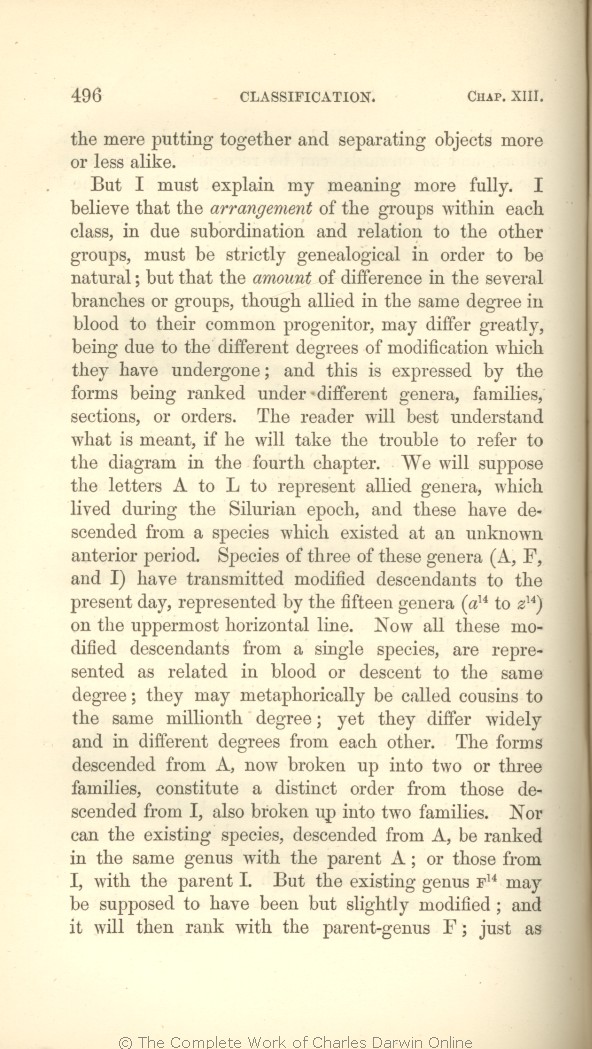But I must explain my meaning more fully. I believe that the
arrangement
of the groups within each class, in due subordination and relation to
the | the 1859 1860 1861 1866 | | each 1869 1872 |
| other 1859 1860 1861 1866 | | other, 1869 1872 |
| groups, 1859 1860 1861 1866 | groups, 1869 1872 |
| to refer 1866 1869 1872 | | of referring 1859 1860 1861 |
| allied genera, which lived 1859 1860 1861 1866 |
| allied genera existing 1872 |
| OMIT 1869 |
| epoch, 1859 1860 1861 1866 1872 | | epoch 1869 |
| and these have 1859 1860 1861 1866 |
| allied genera, 1869 |
| and 1872 |
| a species which existed at an unknown anterior period. 1859 1860 1861 1866 |
| some still earlier forms. 1869 |
| some still earlier form. 1872 |
| Species of 1859 1860 1861 1866 | | In 1869 1872 |
| I) have 1859 1860 1861 1866 |
| I) the species have 1869 |
| I), a species has 1872 |
| to 1859 1860 1861 1866 1869 | |
to
1872 |
| represented as 1859 1860 1861 1866 | represented as 1869 1872 |
| to 1859 1860 1861 1866 1869 | | in 1872 |
|









